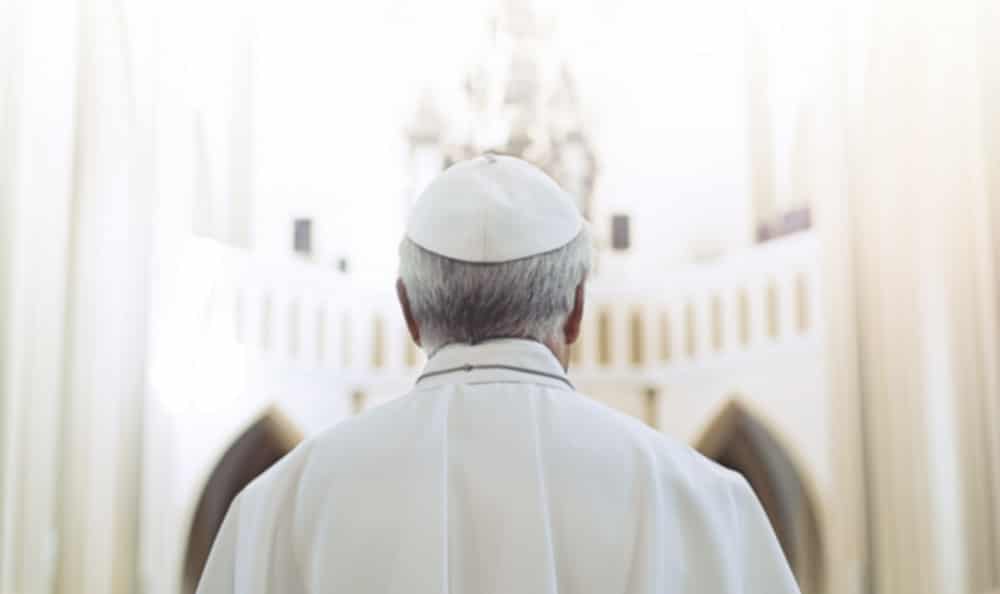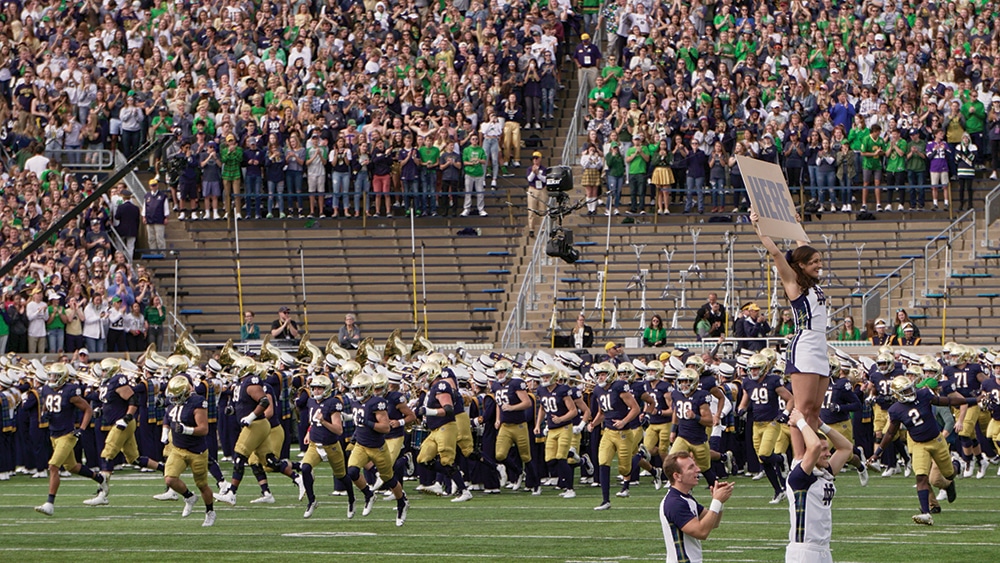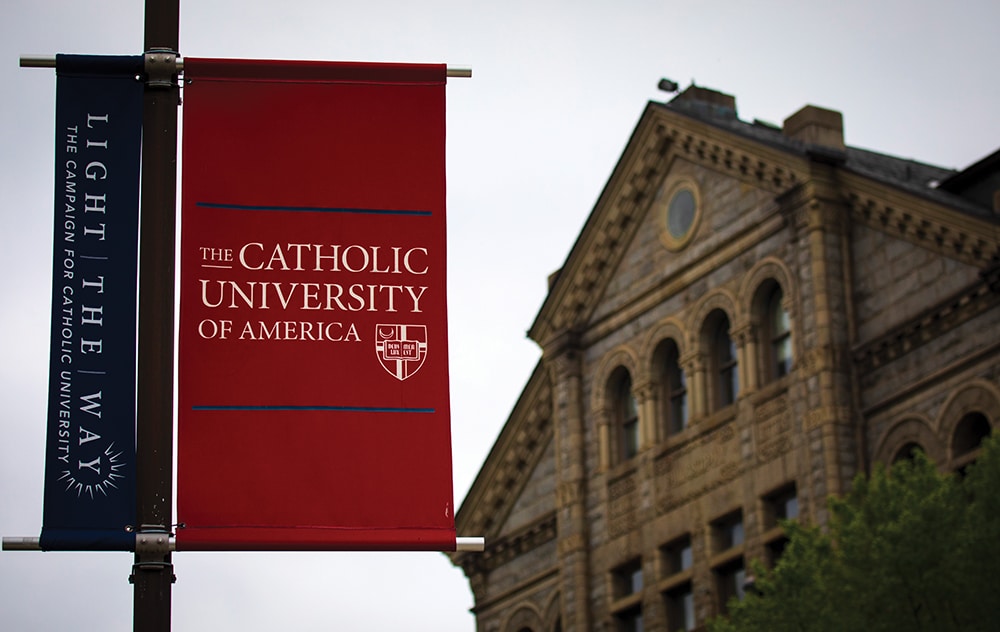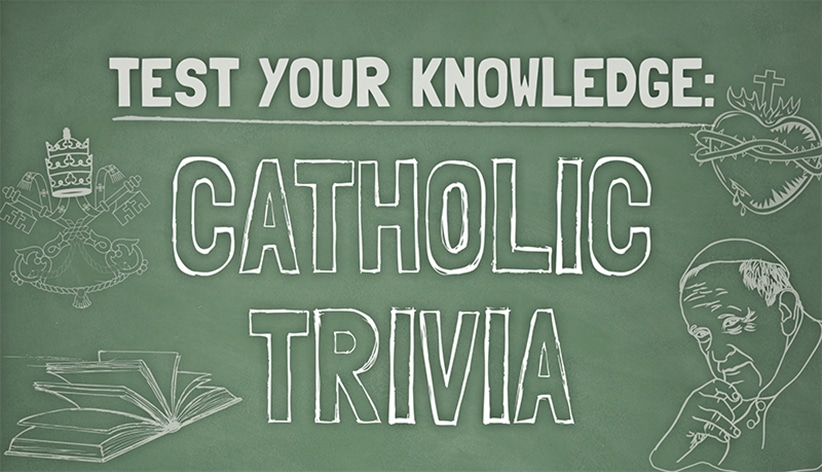In November 1874, William Ewart Gladstone, the former prime minister of the United Kingdom who was destined to occupy that lofty office three more times in his long political career, published a pamphlet with the ominous title “The Vatican Decrees in Their Bearing on Civil Allegiance.”
An Anglican with intensely held though frequently shifting religious views, Gladstone sharply criticized what the Catholic Church’s recent ecumenical council had taught about papal infallibility and suggested it raised doubts about Catholics’ loyalty to the British Crown. The pamphlet sold more than 150,000 copies before the end of the year and was soon followed by a second pamphlet defending the first and replying to its critics.
One of the most prominent critics was Father John Henry Newman, a convert from Anglicanism to Catholicism who years later was named a cardinal (and recently a saint). He replied to Gladstone in a vigorously written piece called “A Letter to the Duke of Norfolk” (the duke being a ranking Catholic member of the British establishment in Victorian England). Today the letter still stands as a model of Catholic apologetics.
Before Vatican Council I and Pope Pius IX formally defined the doctrine of papal infallibility, Newman had fretted that the time wasn’t ripe for doing that. In the face of Gladstone’s attack, however, he leaped to the doctrine’s defense. Just as the Church is divinely preserved from error in the core elements of its faith, he argued, so is its supreme teacher, the pope: “Such then being … the infallibility of the Church, such too will be the pope’s infallibility, as the Vatican Fathers have defined it.”
Today, 150 years after Vatican Council I, these events are worth recalling for their own interest as well as for the light they shed on issues still facing the Church. What is infallibility? What does it mean to say the pope has taught something infallibly? What is the extent of papal infallibility, and what are its limitations?
Defining infallibility
The idea of papal infallibility had been widely accepted in the Church for centuries before Vatican I. Those holding it included theological giants like St. Thomas Aquinas in the 13th century and St. Robert Bellarmine in the 17th century. Pius IX, pope from 1846 to 1878, spoke of it soon after his election as pope in an encyclical called Qui Pluribus. The papacy, he wrote, was established by God “to establish and teach the true and legitimate meaning of his heavenly revelation and to judge infallibly all disputes that concern matters of faith and morals” (Qui Pluribus, No. 10).
 In 1854, Pius IX invoked infallibility in defining — that is, formally teaching as something revealed by God and to be held as a matter of faith — the dogma of Mary’s Immaculate Conception. Significantly, he consulted the world’s bishops before issuing this definition, and the vast majority replied favorably. Then, in a document published Dec. 8, 1854, the feast of the Immaculate Conception, the pope said, “We declare, pronounce and define” — a formula clearly identifying what followed as infallible teaching — the doctrine that Mary from the moment of her conception was “preserved immune from all stain of original sin.” This truth, he added, was “revealed by God and … firmly and constantly to be believed by all the faithful.”
In 1854, Pius IX invoked infallibility in defining — that is, formally teaching as something revealed by God and to be held as a matter of faith — the dogma of Mary’s Immaculate Conception. Significantly, he consulted the world’s bishops before issuing this definition, and the vast majority replied favorably. Then, in a document published Dec. 8, 1854, the feast of the Immaculate Conception, the pope said, “We declare, pronounce and define” — a formula clearly identifying what followed as infallible teaching — the doctrine that Mary from the moment of her conception was “preserved immune from all stain of original sin.” This truth, he added, was “revealed by God and … firmly and constantly to be believed by all the faithful.”
The years that followed weren’t easy ones for Pope Pius. Having come to office as a moderate, reforming pope, he was forced into an increasingly conservative posture by events that included the seizure of the Papal States by the largely anticlerical Italian nationalist movement (many of whose leaders were Masons); the assassination of one of his closest advisors, whose funeral was disrupted and his body thrown into the Tiber River; and an uprising in Rome that forced him to flee for his life, only returning under the protection of French troops.
Restored to the See of Peter, historian James Hitchcock writes, Pius IX henceforth regarded many of the ideas and movements of the modern age with “unrestrained loathing.” In 1864 — once again on Dec. 8 — that negative view of modernity found expression in an encyclical entitled Quanta Cura and especially in a long document attached to it called the “Syllabus of Errors.”
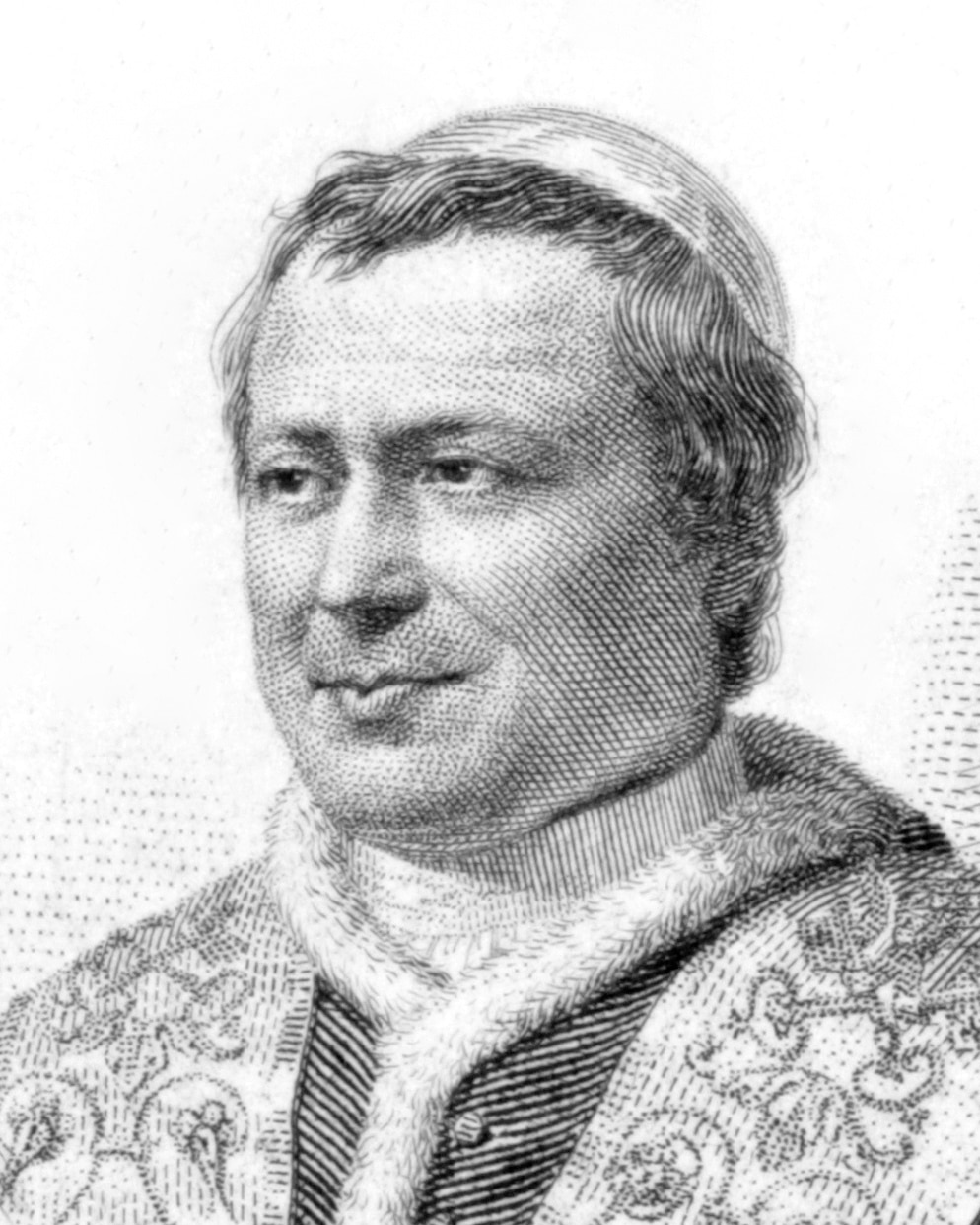
The “Syllabus” (or summary) was a collection of 80 propositions that the pope condemned. Their subjects ranged from pantheism, naturalism and absolute rationalism, through socialism, communism and secret societies, to errors pertaining to Christian marriage. The last — and as history has shown, most famous — of the 80 propositions was this: “The Roman pontiff can and should reconcile and adapt himself to [and come to terms with] progress, liberalism and the modern culture.”
Considering the contents of “progress, liberalism and the modern culture” as Pius IX had experienced them and now condemned them in the preceding 79 propositions, it is hard to see anyone could have expected him to “reconcile and adapt” himself to them. But almost without exception the secular response to Quanta Cura and “The Syllabus of Errors” was a chorus of jeers and cries of outrage. The documents were publicly burned in some places, while in France bishops were threatened with arrest if they caused the pope’s words to be read from the pulpit.
| Teachings from the Catechism |
|---|
|
The Catechism of the Church covers the topic of infallibility in a section on “The episcopal college and its head, the pope.” It begins by declaring that “by a supernatural sense of faith,” the Church as a whole, under the guidance of the Church’s magisterium — the teaching authority of the pope and bishops — “unfailingly adheres” to this body of belief.
The Catechism goes on to say that it’s the task of the teaching authority to preserve the people of God from “deviations and defections” and thus make it possible for them to profess the Faith “without error.” For this purpose, it adds, Christ endows the pope and bishops with “the charism of infallibility in matters of faith and morals.” The Catechism then goes on to quote Vatican Council II on the infallibility of the pope and the bishops teaching in union with him, “above all in an ecumenical council.” Members of the Church have a duty to adhere to such an exercise of infallibility “with the obedience of faith,” it says (CCC, Nos. 889-891). |
Opposing views
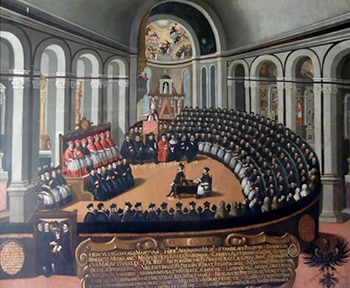
Pius IX was not a man to back down. Now he began to consider convening an ecumenical council — a gathering of the bishops of the world — for the first time since the 16th century at the Council of Trent. As planning proceeded, it became clear that at the top of the council’s agenda would be papal authority, including the infallibility of the pope.
Most bishops had no problem with that. But some did, especially bishops in France, Germany and Austria-Hungary. In some quarters there was even talk of trying to get secular governments to intervene to prevent the council from taking place. Prominent in the opposition were two Frenchmen, Archbishop Georges Darboy of Paris and Bishop Felix Dupanloup of Orleans, along with Bishop Joseph Strossmayer of Djakovo in the Austro-Hungarian Empire, whom historian Owen Chadwick calls a “larger-than-life personality” and the opposition’s leading figure.
As time passed, another group also emerged — the so-called “inopportunists” who accepted the idea of infallibility in principle but held that this was not the time for a formal definition of the doctrine — mainly because it faced too much opposition in non-Catholic circles. In England, Newman was one of these.
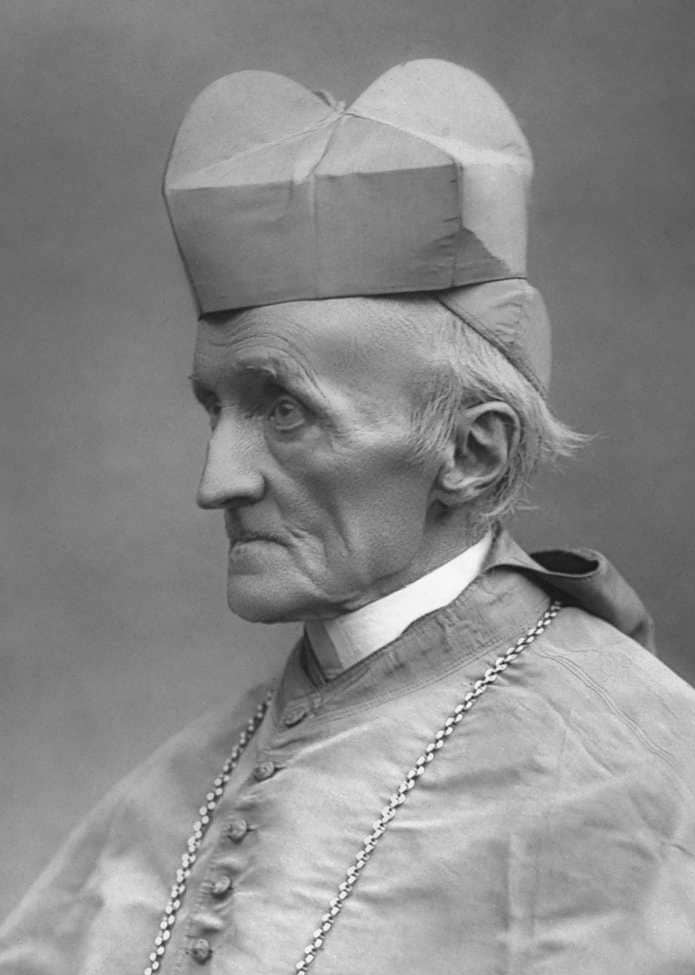
But Archbishop, later Cardinal, Henry Edward Manning of Westminster, like Newman a convert from Anglicanism, was a prominent supporter of defining papal infallibility. And, as that suggests, still another group of Catholics looked forward happily to the prospect of a definition. These were the ultramontanists, people accustomed to seeking guidance in religious matters “beyond the mountains” (that is, the Alps) in Rome. Their attitude was summed up by one wit who said he would be glad to receive a new papal declaration every morning together with his copy of the London Times.
And so the stage was set for Vatican I. The council opened at the end of 1869 — the date, once more, was Dec. 8 — with more than 700 of the Church’s 1,000 bishops in attendance.
Although the number later fell to around 600, Vatican I was the Church’s largest council ever up to that time. Europeans made up about two-thirds of the assembly. But reflecting Catholicism’s geographical expansion in the previous three centuries, there were 67 bishops from the U.S. and Canada, 21 from Latin America, 15 each from China and India, and 18 from Australia and the Pacific.
On the central question before them, Owen Chadwick writes that the majority had no objection to declaring the pope infallible since the doctrine was “so widely believed in the Church and had behind it a historic tradition.” The opponents numbered about 150, including both inopportunists and those who simply didn’t accept the idea as true.
Vatican I also was the occasion for something new in the history of ecumenical councils: determined efforts on both sides to influence public opinion by media leaks.
Trent had been an open affair. By contrast, the organizers of Vatican I attempted to keep its deliberations secret. This was unrealistic from the start, since there was no way of hiding what took place at a meeting of six or seven hundred bishops busily debating matters of substantial public interest from the large press corps assembled to chronicle the event. But even so a sudden outbreak of inside-the-council published reports came as an unpleasant surprise to the Vatican.
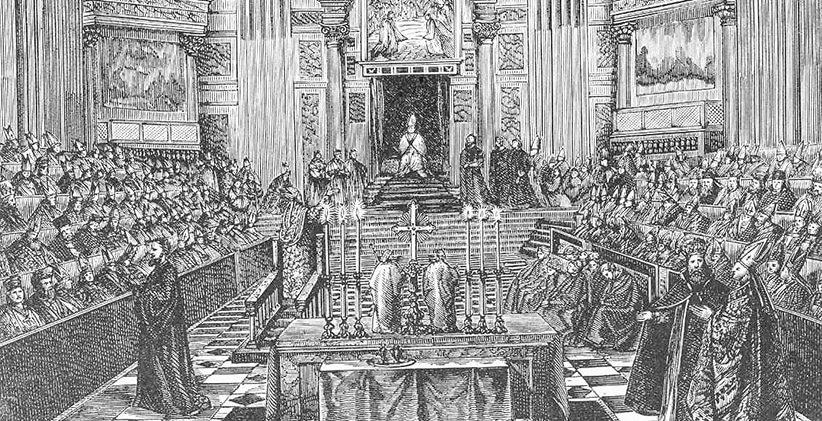
Result and end of the council
Soon, too, the leaks took on a decidedly ideological slant, representing opposed views of Vatican I’s agenda and, especially, papal infallibility.
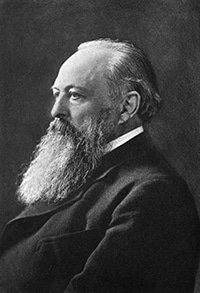
This development began with Lord John Acton, a well-born 36-year-old British liberal Catholic who’d studied history in Munich under eminent, liberal Church historian Father Johannes Dollinger. Acton picked up information from French, German and English bishops opposed to infallibility and relayed it to Dollinger in a series of letters, which the historian edited and published in a German periodical under the title “Letters from Rome on the Council by Quirinus.” The result, says Chadwick, “gave Europe a picture of an unscrupulous majority tyrannizing over minds and consciences.”
But Pope Pius was no dummy. Seeing what was going on, he instructed a monsignor who was present at the council to provide a running account to a highly conservative French journalist named Louis Veuillot. The results, in Veuillot’s hands, appeared in reports that consistently denounced the anti-infallibility minority while supporting the pro-infallibility majority. Acton’s project shaped sophisticated Europeans’ view of Vatican I while Veuillot’s reached a different but no less important audience: French and Italian clergy and conservative laity who were moved to question their bishops on whether they supported the infallibility of the pope.
In the end, the question for the council was not whether to uphold papal infallibility but how to formulate the pope’s role — as a mouthpiece for an ecumenical council or as the Church’s supreme teacher exercising his own authority to define the faith. Vatican I’s relatively moderate wording is found in a dogmatic constitution entitled Pastor Aeternus (“The Eternal Shepherd”).
This constitution states: “And so, faithfully keeping to the tradition received from the beginning of the Christian faith, for the glory of God our Savior, for the exaltation of the Catholic religion, and for the salvation of Christian peoples, we, with the approval of the sacred council, teach and define that it is a dogma revealed by God:
“That the Roman pontiff, when he speaks ex cathedra — that is, when acting in the office of shepherd and teacher of all Christians — he defines, by virtue of his supreme apostolic authority, a doctrine concerning faith or morals to be held by the universal Church, possesses through the divine assistance promised to him in blessed Peter the infallibility with which the Divine Redeemer willed his Church to be endowed in defining the doctrine concerning faith or morals; and that such definitions of the Roman pontiff are therefore irreformable of themselves, not because of the consent of the Church.”
The council adopted Pastor Aeternus by a vote of 533 to 2 on July 18, 1870. Before the vote, 56 bishops of the minority left Rome so as not to have to vote on the document. One of the two negative votes was cast by an American, Bishop Edward Fitzgerald of Little Rock, Arkansas, who after the balloting reportedly knelt before Pius IX and said, “Modo credo, sancte pater” — “Now I believe, Holy Father.”
No sooner had the council taken its crucial vote than the Franco-Prussian War erupted. The French garrison in Rome was withdrawn to fight the Prussians, the bishops hastened home, and the ecumenical council was suspended, never to be reconvened. The Italian nationalist army soon entered the city and claimed it for the Italian state. Pope Pius IX thereupon withdrew behind the Vatican walls, declaring himself “the prisoner of the Vatican” — a title that he and his four immediate successors would claim for the next half-century. Pius IX was beatified by Pope St. John Paul II in 2000.
The Second Vatican Council
In the years after Vatican I, the stature and moral authority of the papacy grew significantly, but only one pope, Pius XII, formally invoked the power of papal infallibility. The occasion was the definition of the dogma of the Assumption. More than 200 bishops had requested this at the First Vatican Council, and Pope Pius XII canvassed the bishops of the entire world before taking the step. Then, on Nov. 1, 1950, he declared it to be “divinely revealed dogma” that the Virgin Mary, “having completed the course of her earthly life, was assumed body and soul into heavenly glory” (Munificentissimus Deus, No. 44)
So matters stood until the Second Vatican Council of 1962-65. Picking up where Vatican I had left off, Vatican II’s theological centerpiece was the dogmatic constitution on the Church, Lumen Gentium (“The Light of Peoples” — that is, Christ). In section 25 the council reaffirms the infallibility of the pope when defining a doctrine of faith and morals, adding that such exercises of papal infallibility do not require “the approval of others” and cannot be appealed.

In that same section, Vatican II also says something else: “The infallibility promised to the Church is also present in the body of bishops when, together with Peter’s successor, they exercise the supreme teaching office.” This they do, Lumen Gentium declares, either when defining a doctrine together with the pope in an ecumenical council, or when, dispersed throughout the world but in union with one another and the pope, they teach, as part of their “ordinary magisterium” (teaching authority), that something is “to be held definitively and absolutely.”
Expanding on that, the Catechism of the Catholic Church, published in 1992 by the authority of Pope St. John Paul II, says:
“The supreme degree of participation in the authority of Christ is ensured by the charism of infallibility. This infallibility extends as far as the deposit of divine Revelation; it also extends to all those elements of doctrine, including morals, without which the saving truths of the faith cannot be preserved, explained, or observed” (No. 2035)
Potentially, this opens up a whole new area for theological exploration: What doctrine or doctrines have already been infallibly taught — are being taught now — by the ordinary magisterium of the world’s bishops in union with the pope? Is this the case, for example, with things like the teachings on abortion and contraception? When is it prudent to declare such teaching infallible and when, arguably, is it not?
The theologians, you might say, have their work cut out for them.
Russell Shaw is a contributing editor for Our Sunday Visitor.
| Words from St. John Henry Newman |
|---|
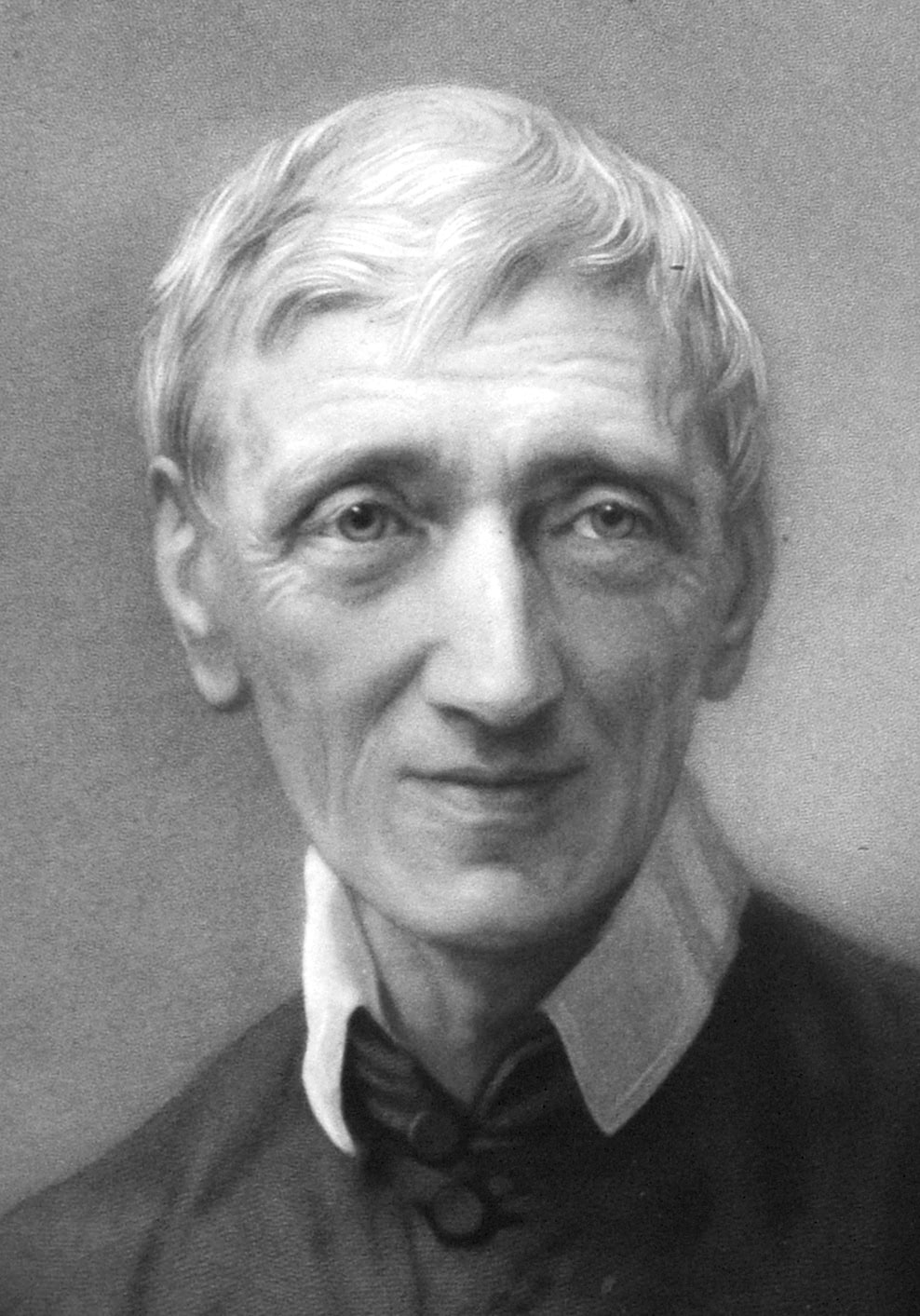 In his classic work of apologetics “A Letter to the Duke of Norfolk,” Father — later Cardinal and now St. — John Henry Newman is careful to place the infallibility of the pope within the Church’s charism, or gift, of infallibility. Writing soon after the definition of papal infallibility by Vatican Council I and Pope Pius IX in 1870, Father Newman in part says this: “The Church has the office of teaching, and the matter of that teaching is the body of doctrine, which the Apostles left behind them as her perpetual possession. If a question arises as to what the Apostolic doctrine is on a particular point, she has infallibility promised to her to enable her to answer correctly. … “The pope must come before us in some special form or posture, if he is to be understood to be exercising his teaching office, and that form is ex cathedra. … But what is to be that moral cathedra, or teaching chair, in which the pope sits, when he is to be recognized as in the exercise of his infallible teaching? “The new definition [by Vatican Council I] answers this question. He speaks ex cathedra, or infallibly, when he speaks, first, as the Universal Teacher; secondly, in the name and with the authority of the Apostles; thirdly, on a point of faith or morals; fourthly, with the purpose of binding every member of the Church to accept and believe his decision.” |

